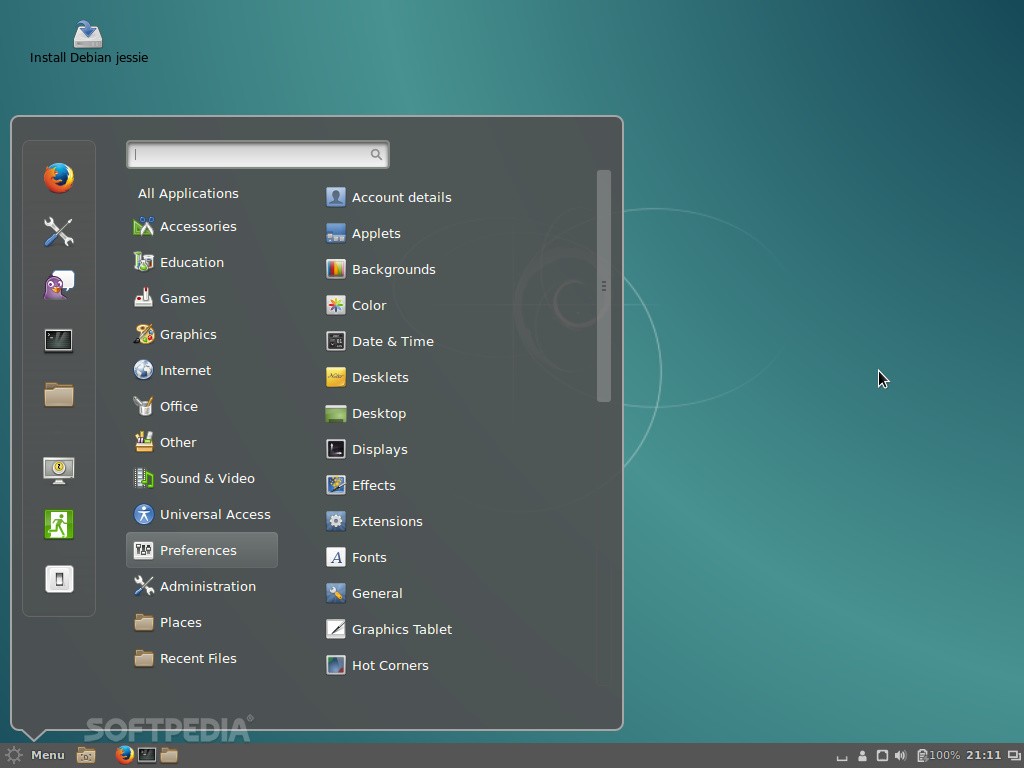Linux Educacional 5 Iso Download
In this article, we will show you how to create an ISO from a bootable USB drive in Linux. We will explain two ways to achieve this: via the command line interface (CLI) and a graphical user interface (GUI) program.
Download the official µTorrent® (uTorrent) torrent client for Windows, Mac, Android or Linux-- uTorrent is the #1 bittorrent download client on desktops worldwide. Gentoo Linux is available free over the Internet. Live environments and stage archives can be downloaded using the links below. Amd64 aka x86_64. Minimal Installation CD 2019-03-17 274 MiB Hybrid ISO (LiveDVD) 2016-07-04 2 GiB Admin CD 2019-03-17 426 MiB. Stage archives. Download Linux Educacional for free. Linux Educacional is a Linux distribution aimed for use in public schools in Brazil.
Create An ISO From A Bootable USB Drive Using dd Tool
dd is a commonly used command-line tool for Linux and other Unix-like operating systems, used to convert and copy files.
To create an ISO image from a Bootable USB Drive files, first you need to insert your USB drive and then find the device name of your USB using following df command.
Sample Output
From the output above, you can clearly see that our attached USB device name is /dev/sdb1.
Now you can run the following command to create an ISO from a bootable USB drive as shown. Make sure to replace /dev/sdb1 with your USB drive and /home/tecmint/Documents/Linux_Mint_19_XFCE.iso with the full name of the new ISO image.
In the above command, the option:
- if – means read from specified FILE instead of stdin.
- of – means write to specified FILE instead of stdout.
Once done, you can verify the ISO image using following ls command as shown.
Create An ISO From A Bootable USB Drive Using Gnome Disks
Gnome Disks is a graphical tool used to manage disk drives and media in Linux. It is used to format and partition drives, mount and unmount partitions, and query S.M.A.R.T. (Self-Monitoring Analysis and Reporting Technology) attributes.
If you don’t have gnome-disk utility on your system, you can install it by running the following command.

After successfully installing Gnome disk, search and open it from the system menu or dash. Then from the default interface, select the bootable device from the list of mounted devices on the left-hand pane, by clicking on it and click on disk options. Then click on Create Disk Image option as shown in the following image.
Create a Disk Partition Image
From the dialog window, set the name of the ISO file, its location and click Start creating. Then enter your password to open the bootable device and the process should start if the authentication is successful.
That’s it for now! In this article, we’ve explained two ways to create an ISO from a bootable USB drive in Linux. Use the comment form below to share your thoughts with us or ask questions.
A new kind of Linux-based operating system designed for massive server deployments
What's new in Container Linux by CoreOS 2079.6.0:
- Security fixes:
- Fix Linux TCP remotely-triggerable kernel panic and excessive resource consumption (CVE-2019-11477, CVE-2019-11478, CVE-2019-11479)
Container Linux by CoreOS is an open source software project that provides system administrators and experienced users with a modern and minimal operating system designed for massive server deployments. It is not based on any existing distribution of Linux and features the latest Linux kernel and Docker technologies for enabling warehouse-scale computing with minimum effort as possible.
Great availability, amazing technologies
The product is distributed as a standard ISO image, which can be burned onto a CD disc or written on a USB flash drive in order to boot it from the BIOS of a PC and install the operating system (detailed installation instructions are provided on the project's homepage).
In addition to the ISO image, which is supported on both 64-bit and 32-bit instruction set architectures, the project can also be booted over network and installed on a local disk via the PXE (Preboot Execution Environment) and iPXE implementations and boot loaders.
Furthermore, it is supported by various cloud providers, including Amazon EC2, GCE, Brightbox and Rackspace, or deployable as a virtual machine on the QEMU, VMware, OpenStack, Eucalyptus and Vagrant virtualization technologies.
Because of its modern internal design, CoreOS uses with up to 50% less RAM (system memory) than any other existing server operating system. In addition, it makes use of the award winning Docker software project to run applications as containers.
Another interesting feature is the active/passive dual-partition scheme, which will make system updates painless and fast, while providing a rollback functionality. Also, it is designed from the ground up to be clustered, even if it runs on a single machine.
Linux Educacional 5 Iso Download Torrent
Bottom line
Summing up, CoreOS is a great Linux-based operating system for massive server deployments, which can be used by top-notch Internet companies like Twitter, Facebook or Google to run their services at scale with high flexibility.

Filed under
LIMITATIONS IN THE UNREGISTERED VERSION- Docker doesn't work out of the box
- config-drive must be used for providing cloud-config
Linux Educacional 5 Iso Download Gratis
 was reviewed by Marius Nestor
was reviewed by Marius NestorContainer Linux by CoreOS 2079.6.0
add to watchlistsend us an update- filename:
- coreos_production_iso_image.iso
- runs on:
- Linux
- main category:
- Linux Distributions
- developer:
- visit homepage